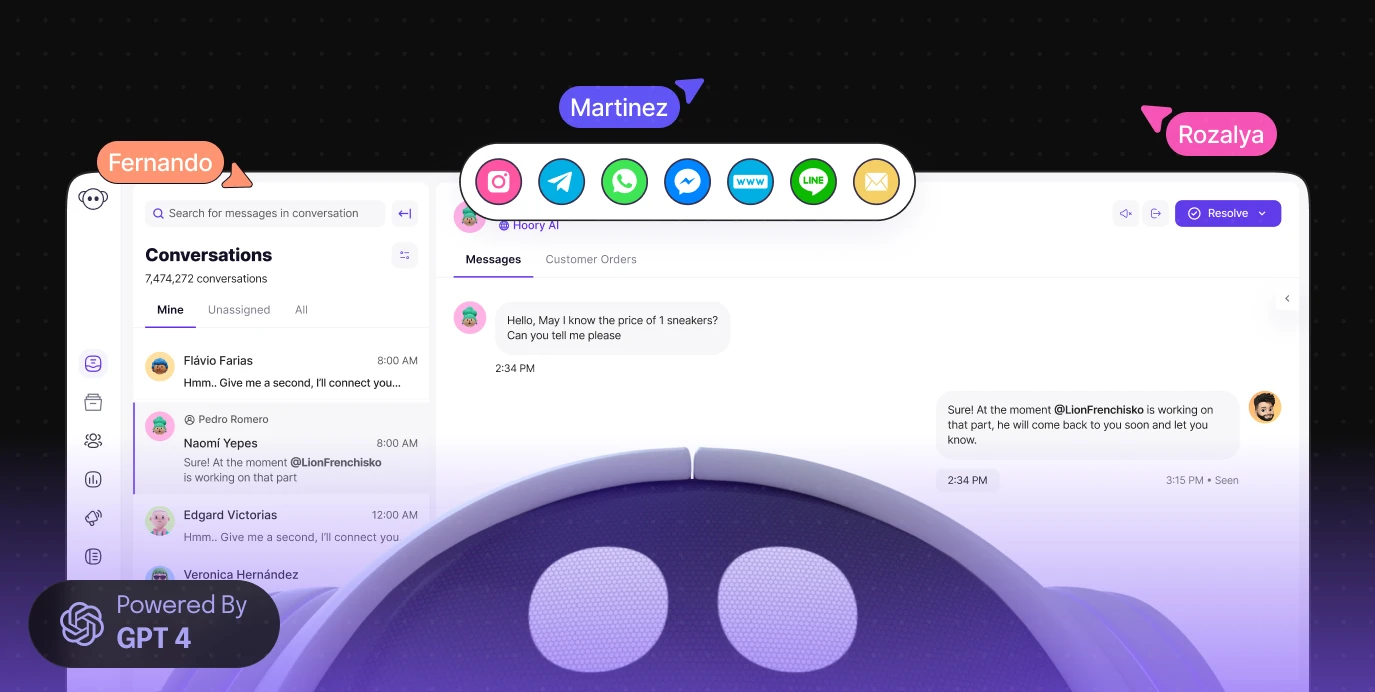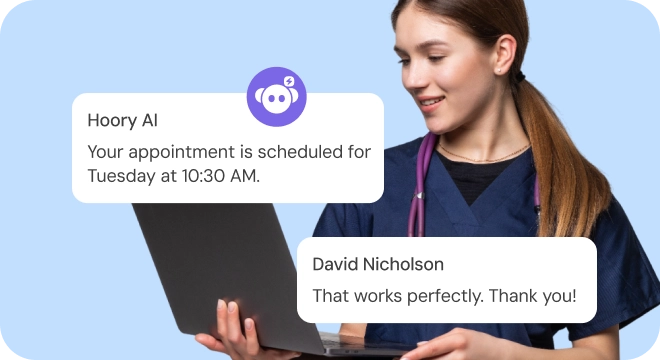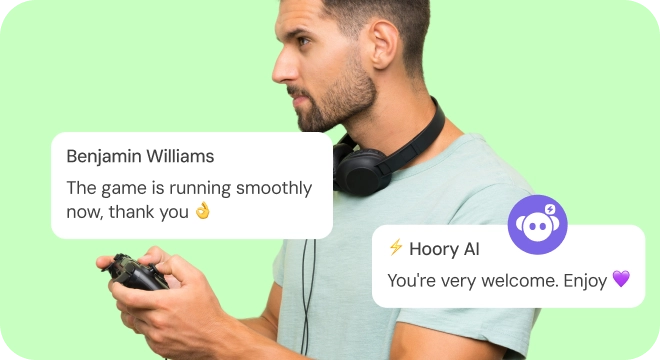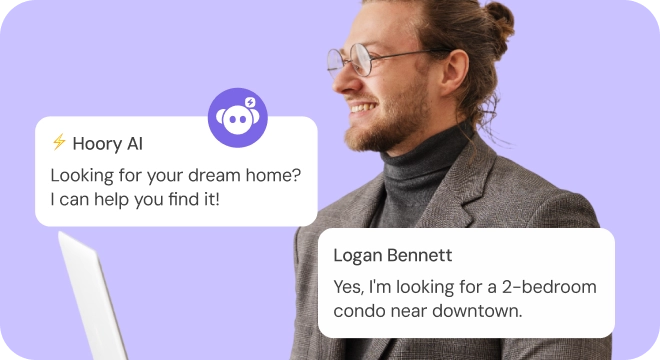Are Chatbots Dead in 2025? The Rise of AI Assistants
• Customer Support
• FastBank

In this world full of digital interactions, chatbots have been a prominent feature, revolutionizing customer service and engagement. However, as technology advances at a rapid pace, the question arises: are chatbots still relevant in 2024? To answer the question, let's delve into the evolving landscape of chatbots, explore the trends shaping the chatbot ecosystem, and, on the contrary, argue for the superiority of AI assistants utilizing Conversational AI.
The growing trust among consumers, with 65% now placing their faith in businesses using AI technology, underscores the significance of responsible and transparent AI deployment by businesses.
Understanding Chatbots and AI Assistants
As we navigate through 2024, the dynamics of chatbot technology are undergoing significant transformations. The emergence of AI assistants marks a pivotal shift in how we interact with artificial intelligence. Unlike traditional chatbots, AI assistants leverage Conversational AI to engage users in more natural and intuitive conversations, advancing user experience and efficiency.
What are Chatbots?
Chatbots are automated programs designed to simulate conversation with human users, providing assistance or information based on predefined rules.
What are AI Assistants?
AI assistants are advanced virtual agents powered by artificial intelligence that can understand context, learn from interactions, and adapt responses to provide personalized assistance.
What's the Difference Between Chatbots and AI Assistants?
The distinction between chatbots and AI assistants lies in their capabilities and sophistication. While chatbots are limited and excel at handling specific tasks within set parameters, AI assistants possess a higher level of intelligence, enabling them to engage in complex conversations, learn from interactions, and offer personalized solutions tailored to individual needs. One of the crucial perks to mention for AI assistants is Multilingual AI Assistants, providing multilingual responses that cover a wide range of audiences who can interact. And we are talking about this not only via texts but also voice messages. Plus, AI assistants can be emotional and show empathy to your customers.
While chatbots excel at providing quick responses to predefined queries, AI assistants offer a more comprehensive range of functions, including handling complex interactions, engaging in natural conversations, and performing administrative tasks efficiently.
Switching to AI Assistants: A Smart Move
For a more sophisticated approach to customer service, businesses should choose AI assistants over chatbots for their advanced capabilities in providing personalized and comprehensive customer experiences. While chatbots excel at handling basic queries and automating simple tasks, the chatbot benefits they provide can still play a role before businesses transition to AI assistants for more advanced, personalized experiences. Hoory, as the innovator of 2024 in the gaming industry, offers a range of advanced features that make it a standout choice for businesses looking to improve their customer support and engagement strategies, overcoming the tools such as Intercom, Zendesk, and Hubspot Service Hub. Here is an elaboration on each key point that businesses can benefit from, unlike other assistants in the market.
Multilingual Conversations with Text and Voice
AI Assistants revolutionize the world of multilingual communication by facilitating conversations in diverse languages, both through text and voice inputs. In an increasingly globalized world, where businesses provide audiences with multiple linguistic backgrounds, the ability to converse fluently in various languages is supreme. Hoory's rich linguistic capabilities go beyond barriers, ensuring that users from different regions and cultures can engage effortlessly, providing inclusivity and expanding the reach of businesses across borders, both via text and voice interactions. Besides English, Spanish and Arabic, Hoory supports languages like Shona and Setswana spoken in Zimbabwe and Botswana.
Transliteration Support
One of the hallmark features of Hoory AI Assistant is its unique support for transliteration, enabling the understanding of non-Latin alphabets typed in Latin characters. This functionality is particularly invaluable for non-Latin alphabets
and can be used for regions where languages can be transcribed: Arabic, Armenian, Amharic, Bengali, Belarusian, Gujarati, Hindi, Japanese, Kannada, Myanmar, Russian, Serbian, Tamil, Telugu, and Ukrainian. By converting transliterated text, Hoory ensures that communication remains fluid and comprehensible, bridging the gap between diverse linguistic systems and ensuring smooth interactions across linguistic boundaries.
Personalized Assistance
No personalization, no success. By leveraging hyper-personalization through conversational and generative AI technologies, businesses can create engaging and relevant experiences for customers. AI-driven personalization can improve conversion rates by up to 25%, and recent data shows that using AI for customers can increase leads by 50%. Proper personalization enables AI virtual assistants to understand customer needs, provide tailored suggestions, and offer personalized product recommendations based on individual preferences and behavior.
Hoory's commitment to personalized assistance is demonstrated by its ability to handle interactions with individual preferences and requirements. Through sophisticated algorithms and user profiling techniques, Hoory analyzes user behavior and preferences, delivering customized recommendations and solutions that resonate with each user. It offers built-in templates for creating conversations, marketing strategies, and product recommendations, including lead magnets, lead scoring, NPS evaluations, and more. Businesses can leverage its chatbot builder to utilize rule-based training options, import files for personalized flows, or start from scratch to incorporate desired logic that enhances decision-making processes and validates business strategies.
-
Hoory smoothly integrates with various platforms to improve personalization efforts. For one, Webhooks can be integrated to offer an API endpoint for synchronizing with other systems, expanding the scope of personalized interactions and data utilization.
-
By using the available data, businesses can analyze results to pinpoint user drop-off points and gain valuable insights into user behavior. This analysis enables incremental improvements in chat conversion rates and overall customer engagement.
-
Hoory users can preview their rule-based conversations, and export flows and share them with team members through the collaborative features. This functionality encourages teamwork, streamlines processes, and enhances overall efficiency in delivering personalized experiences.
Scalability and AI-powered Performance
To handle large volumes of data and deliver accurate insights in real-time, these features enable businesses to make data-driven decisions quickly and efficiently, capitalize on emerging opportunities, and minimize the risk of human errors in performance and quality reporting. AI-driven reporting systems must be scalable to handle increasing data volumes, optimize algorithms for reduced processing time, and regularly monitor system performance to maintain efficiency.
Hoory's scalability and performance are unrivaled, capable of handling up to 100,000 requests per day with optimal efficiency, unlike Intercom or Zendesk, which are less scalable. Powered by advanced AI algorithms and optimized for performance, Hoory delivers lightning-fast responses and maintains optimal performance even under heavy loads.
Omnichannel Inbox Integration
By consolidating all messages into a unified platform, businesses can efficiently manage interactions from various sources, including websites, social media platforms, and messaging apps. Hoory supports the all-in-one-place integration of an omnichannel inbox as a cornerstone for smooth communication management. This centralized interface eliminates silos and fragmentation, enabling consistent and cohesive experiences across multiple touchpoints, thereby enhancing responsiveness and customer satisfaction.
Cost Efficiency
And, of course, pricing. By automating repetitive tasks and operations and improving efficiency, AI assistants drive significant cost savings for businesses. Through reduced reliance on manual intervention and optimized resource allocation, Hoory helps businesses cut operational costs and maximize ROI. Moreover, the scalability and performance of Hoory ensure that businesses can achieve economies of scale, gaining greater value from their investment in AI-powered assistance while minimizing costs and operational expenses.
The Future of Chatbots and AI Virtual Assistants
As we navigate the technological landscape of 2024, it becomes evident that the future of chatbot technology lies in embracing AI assistants. With their advanced capabilities, personalized interactions, and efficiency enhancements, AI assistants powered by Conversational AI are set to redefine customer engagement strategies and elevate user experiences across various industries.
In conclusion, while chatbots have played a significant role in shaping digital interactions, the evolution of AI assistants signifies a paradigm shift toward more intelligent and intuitive conversational experiences. By embracing technologies like Hoory AI Assistant and recognizing the potential of Conversational AI evolution, businesses can stay ahead of the curve in 2024.

























